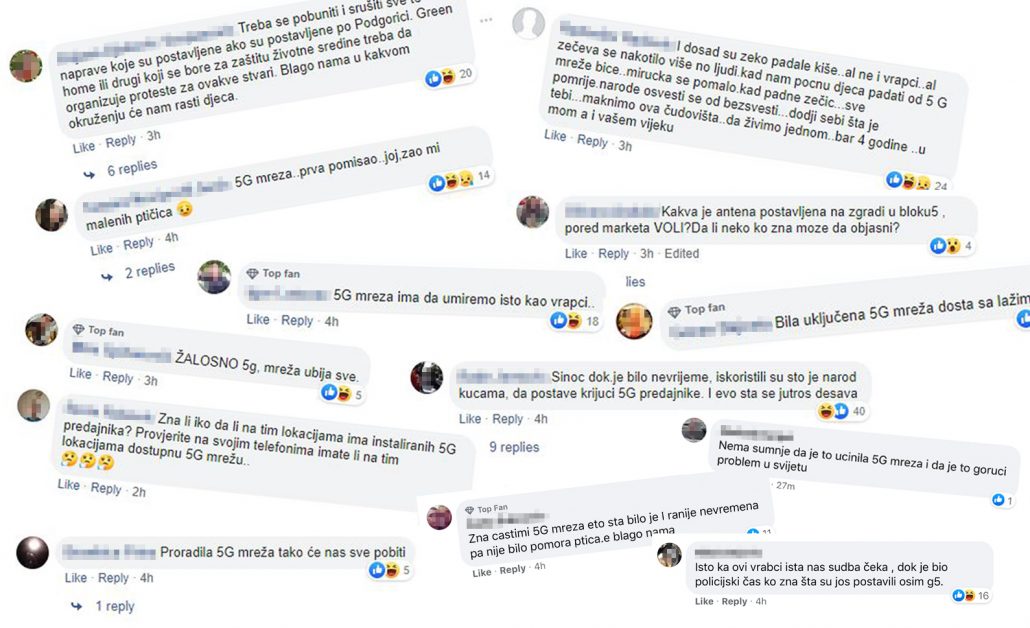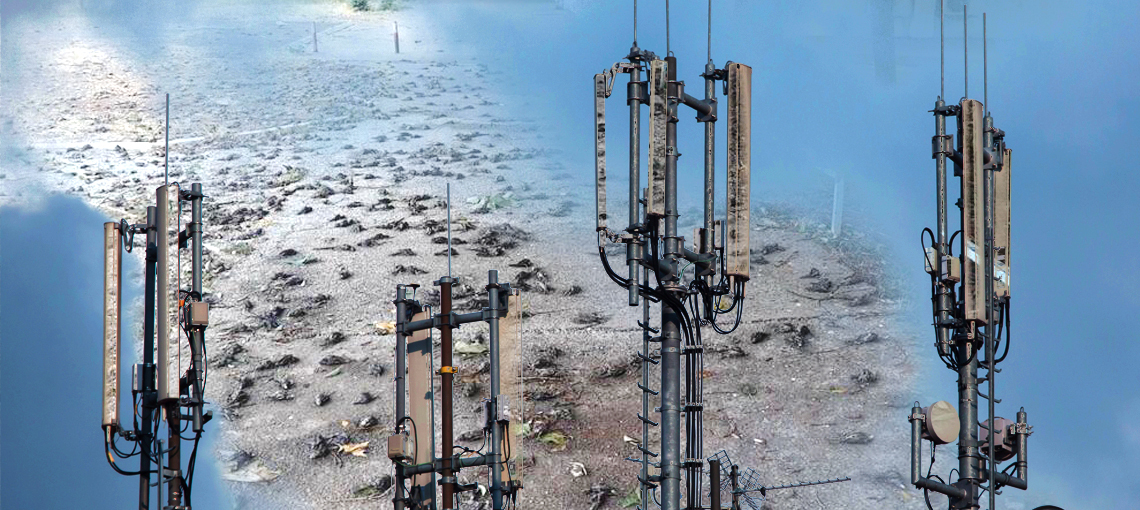The news on the death of several hundreds of sparrows, due to a thunderstorm that hit Podgorica last night, created an avalanche of comments that the 5G technology is responsible for their death. That disinformation could be found among the readers’ comments on almost all Montenegrin news portals and their Facebook pages.
The comments on the news portals read that the authorities used the thunderstorm to install secretly the 5G masts in the night and that the consequences of such actions could be seen this morning. One of the comments read that the people themselves wanted the technology, which “could be easily installed in Montenegro because no one knows what that is”.

Many times have we explained that there are no scientific proofs of 5G technology having an impact on the health of the living creatures. Even if that would be true, the sparrows could not die due to the frequencies of the 5G technology because its first installations in Montenegro are expected no sooner than late 2022.
Ornithologist Darko Saveljic explained for the DFC that the birds died due to a sudden drop in temperature.
“Sparrows are social birds, which after nesting form flocks that sometimes account for several hundreds of them. They search for food, drink water, and sleep together. As this was the first rain young sparrows faced after coming out of their nests, they did not steel themselves for such a heavy rain and temperature drop of more than 20 degrees. The strong wind had a deadly cooling factor. Those who were looking saw that the rain was falling horizontally. All that brought death to hundreds of them. Most probably to other species in nature too, but the sparrows live with us, so we found about that immediately”, Saveljic said.
This is not the first time that the Montenegrin public reads about speculations on the harmful effects of news technologies. On April 4, “The petition against the implementation of 5G in Montenegro” appeared on the peticije.online platform, explaining that many harmful effects hit the counties that have already installed the 5G network. They explained that during the 5G testing in the Netherlands, hundreds of birds fell from the sky and died because they were using frequency ranges which are beneficial neither for human health nor for nature.
Many conspiracy theorists and 5G technology opponents refer to the death of birds in the Netherlands. When the bird deaths occurred (November 2018), no 5G testing was performed, and the last testing was carried out on July 28, 2018, a couple of months before the incident. The theories were denied even by the local societies for the protection of birds.
Just like other generations of wireless technologies (4G, 3G, and 2G), 5G cellular data are transmitted through radio waves. Radio waves constitute a small part of a broader electromagnetic spectrum of waves and they emit the energy called electromagnetic radiation. Radio waves can be found at the low end of the electromagnetic spectrum – and they produce only non-ionizing radiation (a type of electromagnetic radiation that does not have enough energy to ionize atoms or molecules, i.e. to remove electrons from atoms). That means that these waves cannot damage DNA inside cells, compared to waves with higher frequency (such as gamma rays, X-rays, and ultraviolet light) which may cause alteration in the DNA inside any cell.

